
How to Use 18650 Li-ion Battery x 2: Examples, Pinouts, and Specs
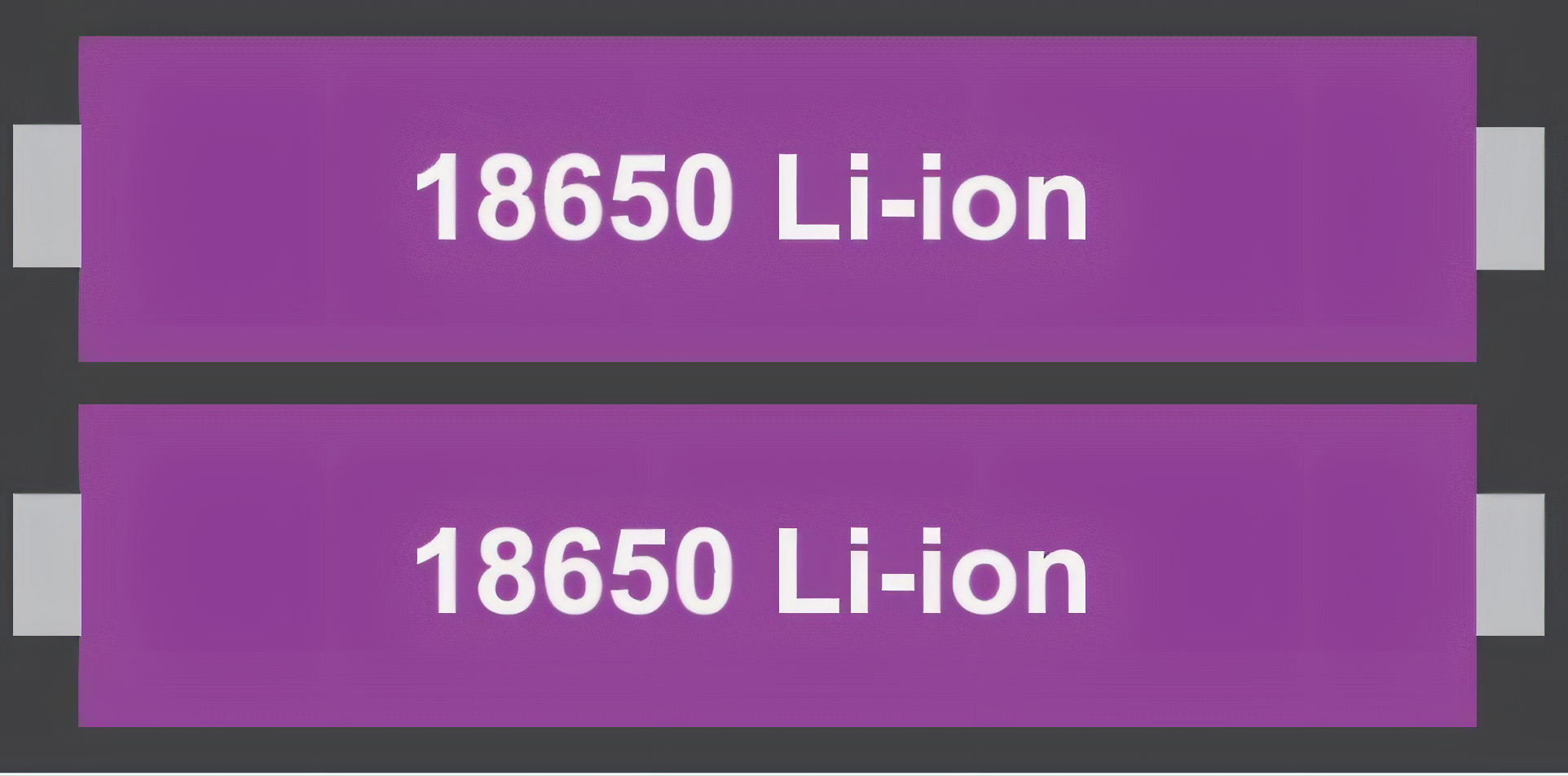
 Design with 18650 Li-ion Battery x 2 in Cirkit Designer
Design with 18650 Li-ion Battery x 2 in Cirkit DesignerIntroduction
The Samsung 18650 Li-ion battery is a high-capacity, rechargeable lithium-ion cell that is cylindrical in shape. It is widely used in various electronic devices such as laptops, power banks, flashlights, and even in DIY projects and hobby electronics. Due to its standard size and significant energy density, it is also commonly used in battery packs for electric vehicles and portable power tools.
Explore Projects Built with 18650 Li-ion Battery x 2
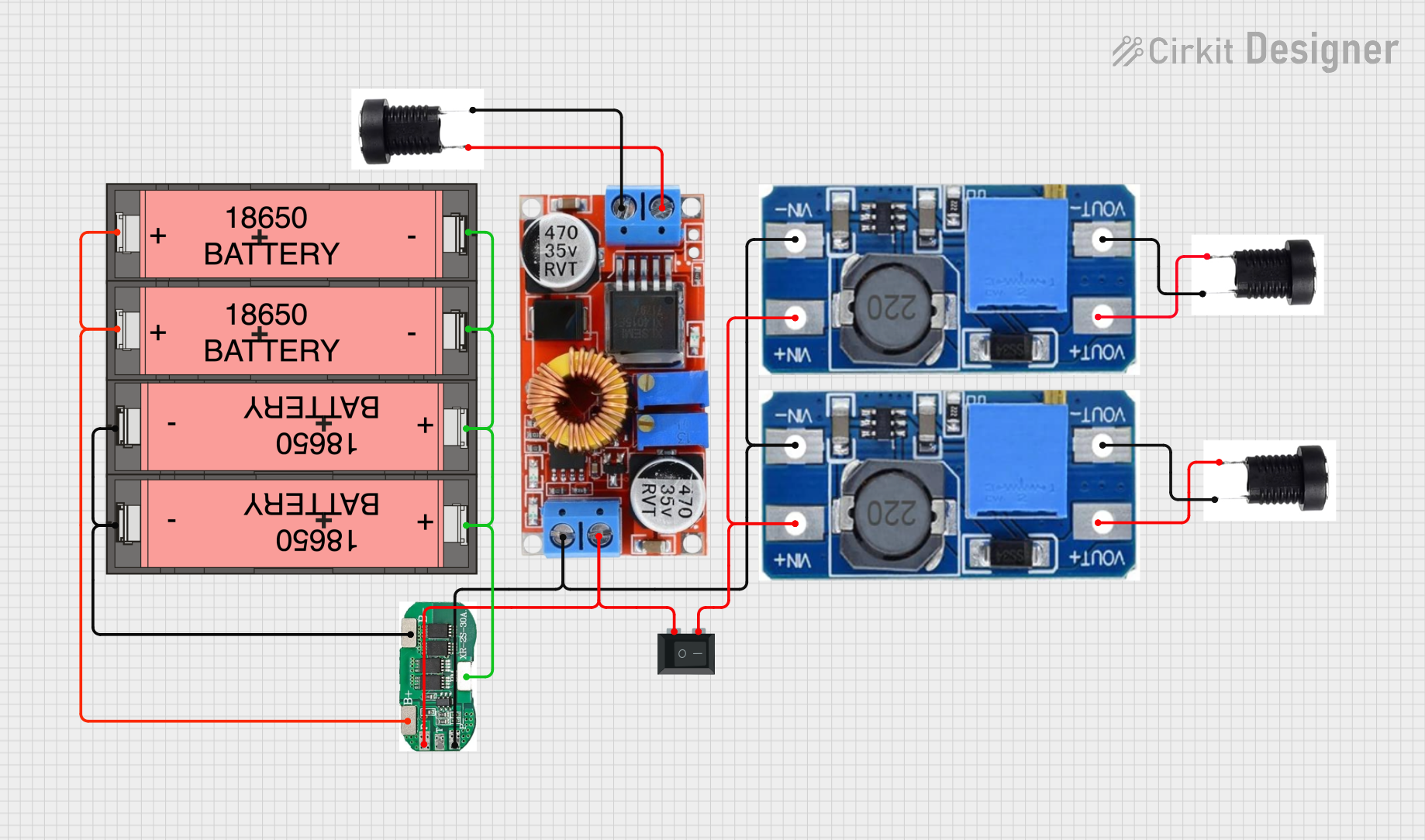
 Open Project in Cirkit Designer
Open Project in Cirkit Designer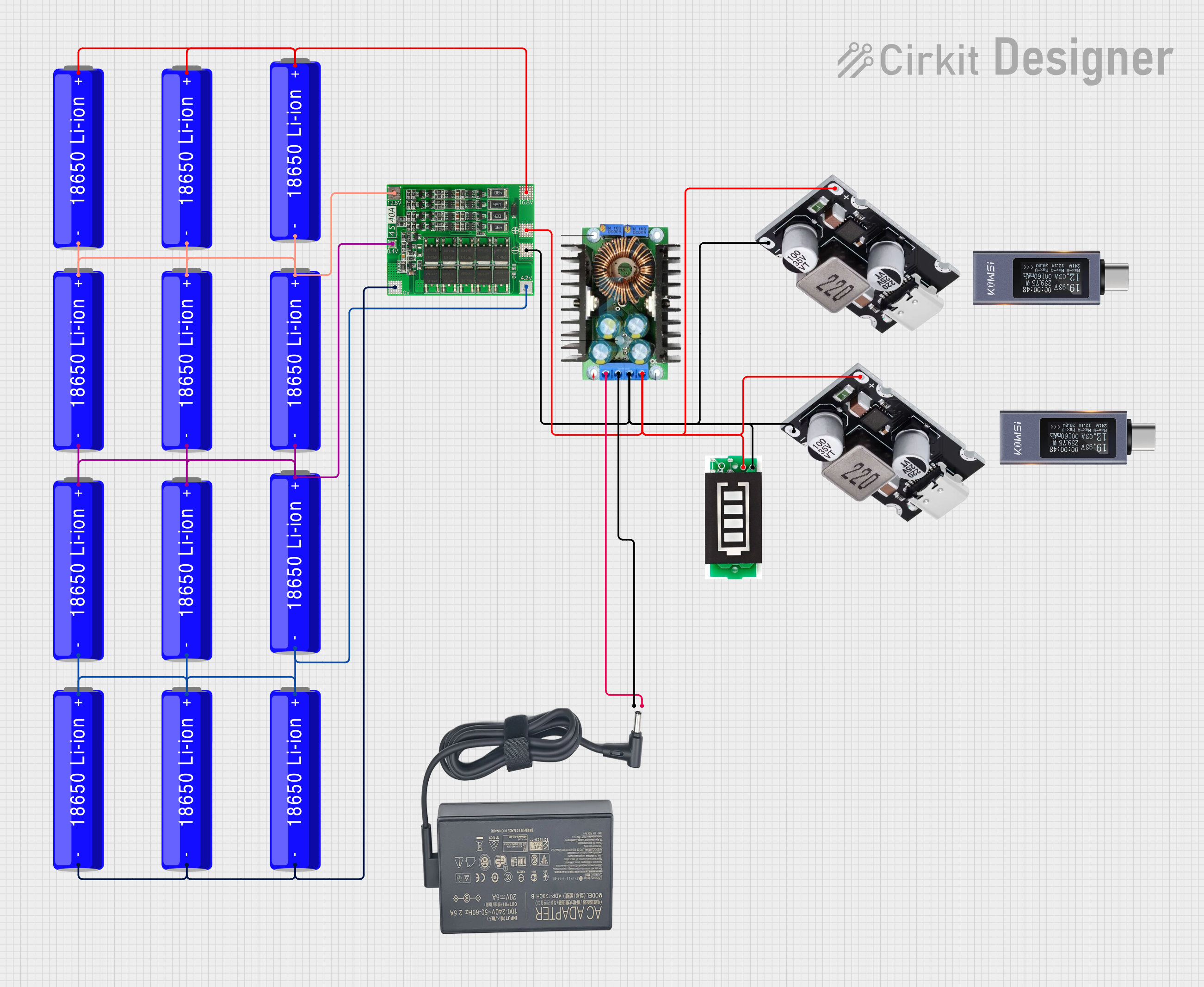
 Open Project in Cirkit Designer
Open Project in Cirkit Designer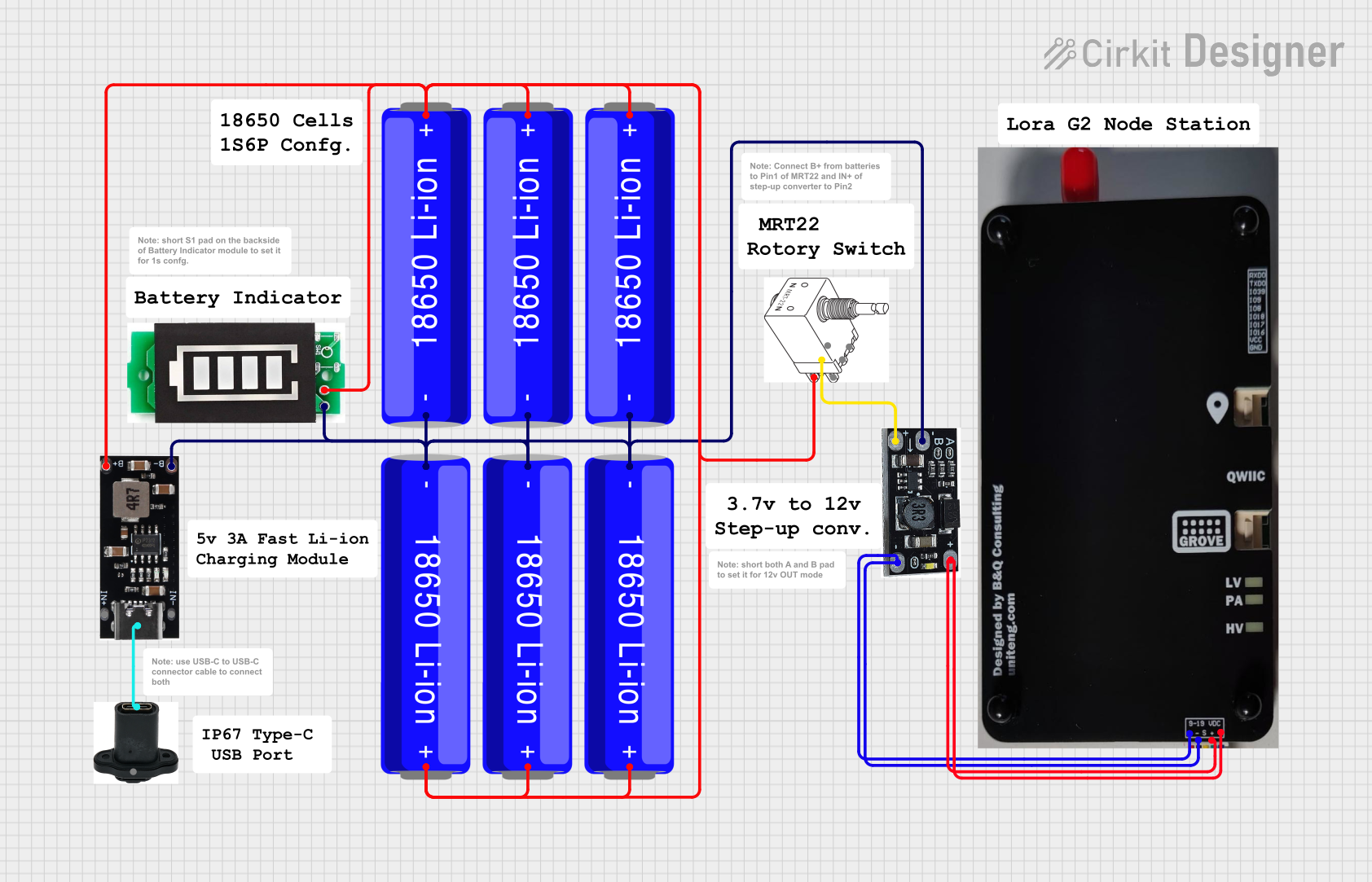
 Open Project in Cirkit Designer
Open Project in Cirkit Designer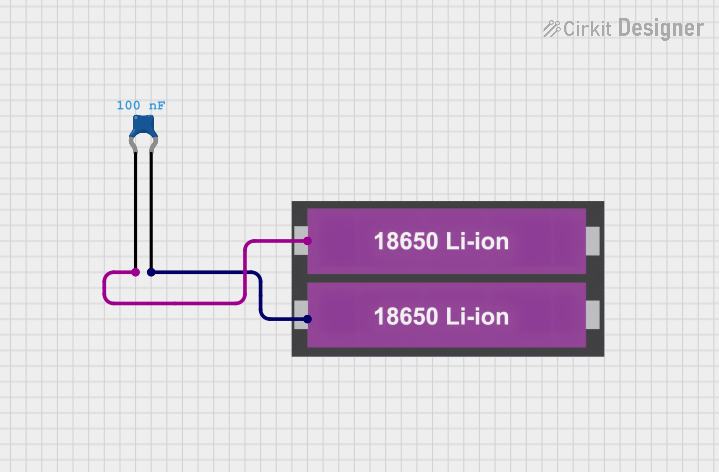
 Open Project in Cirkit Designer
Open Project in Cirkit DesignerExplore Projects Built with 18650 Li-ion Battery x 2

 Open Project in Cirkit Designer
Open Project in Cirkit Designer
 Open Project in Cirkit Designer
Open Project in Cirkit Designer
 Open Project in Cirkit Designer
Open Project in Cirkit Designer
 Open Project in Cirkit Designer
Open Project in Cirkit DesignerCommon Applications and Use Cases
- Portable electronics (laptops, cameras)
- Power banks
- Flashlights
- Electric vehicles (as part of a larger battery pack)
- DIY electronics projects
- Hobbyist remote-controlled gadgets
- Uninterruptible Power Supplies (UPS)
Technical Specifications
Key Technical Details
- Nominal Voltage: 3.6V - 3.7V
- Maximum Voltage: 4.2V
- Cut-off Voltage: 2.5V - 3.0V
- Typical Capacity: 2600mAh - 3500mAh (varies by model)
- Maximum Continuous Discharge Current: Varies by model (usually around 20A)
- Chemistry: Lithium-ion
- Diameter: 18.0 mm
- Length: 65.0 mm
- Weight: Approximately 45g
Pin Configuration and Descriptions
Since the 18650 Li-ion battery is a cylindrical cell, it does not have a traditional pin configuration. Instead, it has a positive terminal (cathode) at one end and a negative terminal (anode) at the other end.
| Terminal | Description |
|---|---|
| Positive (+) | Flat or button top, connected to the cathode of the battery cell |
| Negative (-) | Flat bottom, connected to the anode of the battery cell |
Usage Instructions
How to Use the Component in a Circuit
- Battery Orientation: Ensure the positive end of the battery aligns with the positive terminal of the device and the negative end with the negative terminal.
- Battery Holder: Use a battery holder specifically designed for 18650 cells to ensure proper contact and ease of replacement.
- Voltage Regulation: If connecting to a circuit that requires a regulated voltage, use a voltage regulator or a battery management system (BMS) to prevent over-voltage.
- Charging: Use a dedicated charger designed for 18650 Li-ion batteries. Do not exceed the recommended charging voltage of 4.2V.
Important Considerations and Best Practices
- Do not overcharge or over-discharge the battery as it can lead to reduced lifespan or damage.
- Avoid short-circuiting the battery, which can cause overheating or even an explosion.
- Use a protection circuit when building a battery pack to prevent overcharge, over-discharge, and short circuits.
- Store in a cool, dry place and avoid exposing the battery to high temperatures or direct sunlight.
- Recycle responsibly when the battery reaches the end of its life.
Troubleshooting and FAQs
Common Issues Users Might Face
- Battery not charging: Ensure the charger is functioning and compatible with 18650 batteries. Check for proper contact between the battery terminals and the charger.
- Reduced capacity or runtime: The battery may be nearing the end of its life cycle or may have been subjected to improper charging/discharging practices.
- Battery overheating: This could be due to overcharging, high discharge rates, or external environmental factors.
Solutions and Tips for Troubleshooting
- Battery not charging: Verify the charger's output voltage and polarity. Clean the battery terminals and the charger contacts.
- Reduced capacity or runtime: Replace the battery if it has reached the end of its life cycle. Always follow proper charging and discharging practices.
- Battery overheating: Stop using the battery immediately. Allow it to cool down in a safe environment away from flammable materials.
FAQs
Q: Can I charge 18650 batteries in series? A: Charging batteries in series without proper balancing can be dangerous. It's recommended to use a charger that individually charges each cell or a BMS for balance charging.
Q: How do I dispose of 18650 batteries? A: Do not throw them in the trash. Take them to a battery recycling center or a designated e-waste disposal facility.
Q: Can I use any 18650 battery in my device? A: Check your device's specifications for battery requirements. Some devices require batteries with a protection circuit or specific discharge rates.
Q: How long does an 18650 battery last? A: The lifespan depends on usage, charging habits, and quality of the battery. Typically, an 18650 battery can last for 300-500 charge cycles.
Note: This documentation is for informational purposes only. Always consult the manufacturer's datasheet for the specific battery model you are using to ensure safe and proper usage.